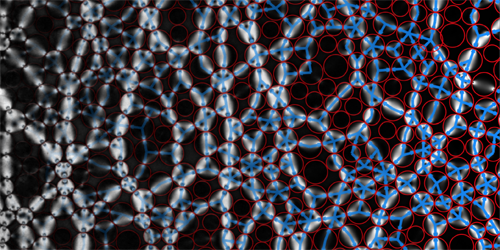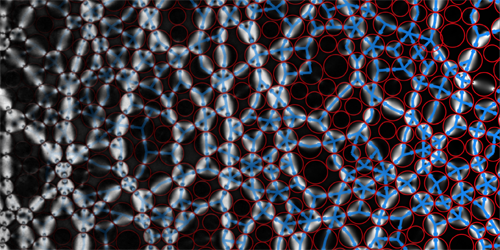Hints of an Equation of State for Granular Materials
The behavior of a gas can be predicted using equations of state, which describe the state of matter using variables such as temperature, pressure, and volume. Whether a similar approach applies to granular materials—aggregates of unbound, macroscopic particles—is uncertain, as the constituents of such materials do not experience thermal motion. Now, researchers at North Carolina State University in Raleigh have identified, through experiments, one temperature-like quantity that could constitute a variable of state in such an equation. The work could inspire applications to real-life particle-based systems such as calving glaciers and biological cells.
Ephraim Bililign and colleagues laid nearly 900 plastic disks on a square and squeezed them from the sides so that they jammed together. They investigated three pressure regimes: uniaxial compression, biaxial compression, and shearing (with one wall pushed in and an adjacent wall withdrawn). The researchers mapped the stress distribution for each regime by observing polarized light transmitted through the disks.
The team represented the interparticle forces as a mosaic of tiles whose dimensions depended on the local stress magnitude. They found that a previously introduced quantity related to the sizes of these tiles, which they termed keramicity, is conserved across all regimes for a given confining pressure. In the same way that temperature describes how entropy increases with total energy, keramicity describes how entropy increases with applied stress. The team also analyzed a related quantity called angoricity, which was previously believed to be a possible temperature-like quantity. However, they found that its value depended on the squeezing regime, ruling it out as a variable of state.
This research is published in Physical Review Letters.
–Marric Stephens
Marric Stephens is a freelance science writer based in Bristol, UK.





